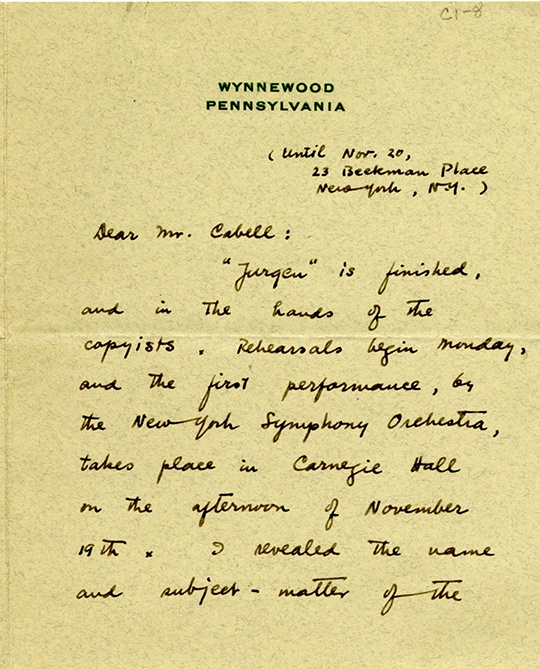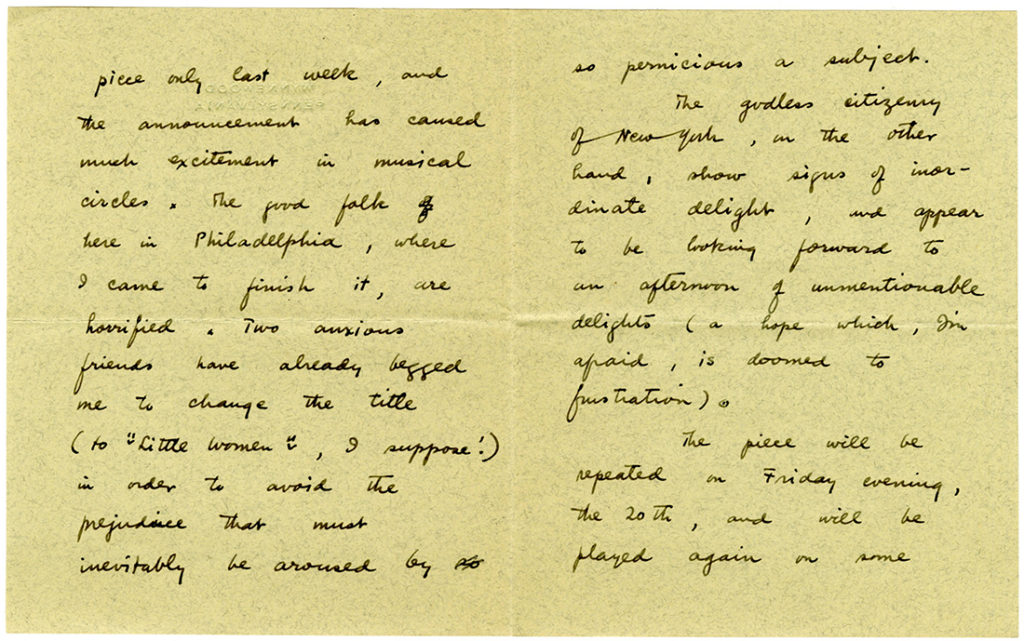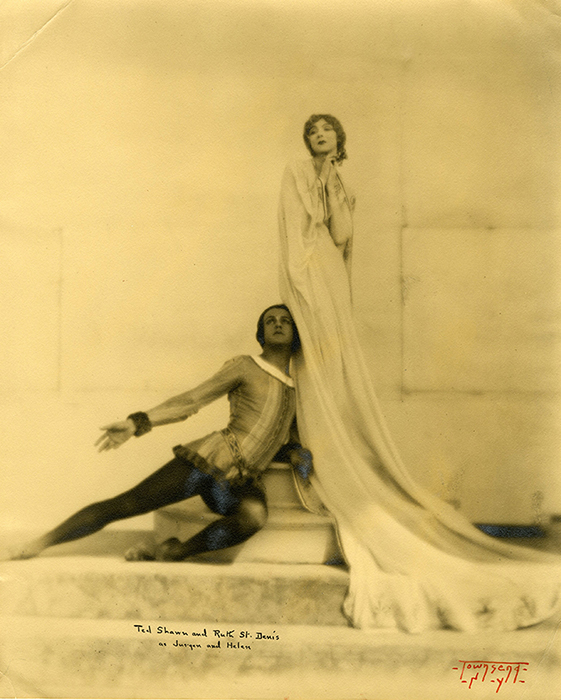
Special Collections and Archives, VCU Libraries
In 1925, conductor Walter Damrosch commissioned Deems Taylor, the American composer and music critic, to compose a piece for the New York Symphony. Taylor had been working on the idea of translating Cabell’s Jurgen into music and so wrote to Cabell to ask for his permission: “I have been thinking about the book for four years, and its beauty and musical potentialities still fascinate–and elude–me. I am not sure, even yet, that I can do justice to it, but I’d like to try. And I can at least promise to deal fairly with it.”
Cabell had no objection, so Taylor began to work on what became a one movement symphonic poem.
Taylor wrote Cabell to let the author know that his “Jurgen” was finished and in the hands of the copyists. “I revealed the name and subject-matter of the piece only last week….The good folk here in Philadelphia, where I came to finish it, are horrified. Two anxious friends have already begged me to change the title (to “Little Women”, I suppose!) in order to avoid the prejudice that must inevitably be aroused by so pernicious a subject. The godless citizenry of New York, on the other hand, show signs of inordinate delight…”
Taylor’s interpretation of Cabell’s book debuted at Carnegie Hall on November 19, 1925 at an afternoon performance.
Olin Downes, reviewing the premiere for the New York Times (November 20, 1925, p. 18), wrote,
“The symphonic poem “Jurgen” is not attempt at literal tonal transcription of episodes of the story, and those who hoped to find reference to Jurgen’s amorous encounters in the music were destined either to cheat themselves by imagination or go disappointed. It is in a far more ideal spirit that Mr. Taylor has written. The more he contemplated the theme unfolded in Cabell’s fantastic and wistful tale the less it assumed the character of a series of actual episodes, and the more a revelation of the adventures of the spirit.”
Speaking to Downes for the review, Taylor said, “I have tried to show Jurgen facing the unanswerable riddle of why things are as they are: Jurgen ‘clad’ in the armor of his hurt, spinning giddily through life, strutting, posturing, fighting, loving, pretending; Jurgen proclaiming himself count, duke, king, emperor, god: Jurgen beaten at last by the pathos and mystery of life, bidding farewell to that dream of beauty which he had the vision to see but not the strength to follow.”
Downes’ mixed review praised Taylor for his musical themes’ “ingenious transformations” and his orchestration with its “brilliant and at times of impressive sonority.” But ultimately Downs declared the composition “less a complete achievement than a step from earlier and safer ground to greater horizons.” Downes added this faint praise, “The tone poem was cordially received.”

Special Collections and Archives, VCU Libraries

Special Collections and Archives, VCU Libraries

Special Collections and Archives, VCU Libraries
Both the Chicago and San Francisco Symphonies performed Taylor’s piece in 1928, and the following year, modern dance pioneers, Ted Shawn and his wife Ruth St. Denis presented a dance version of Jurgen for which Taylor provided a two-piano arrangement.
Shawn described the work’s reception in a letter to Cabell and noted he would mail some photographs of the production under separate cover.
Ted Shawn and James Branch Cabell maintained a friendship and correspondence for over 20 years. A number of Shawn’s letters may be found in the Margaret Freeman Cabell papers (M 228). A publicity photograph of Ted Shawn as Jurgen was included in Jane Sherman’s Barton Mumaw, Dancer: From Denishawn to Jacob’s Pillow and Beyond.
To learn more about Deems Taylor’s original composition, see James A. Pegolotti’s Deems Taylor: a Biography.

Special Collections and Archives, VCU Libraries